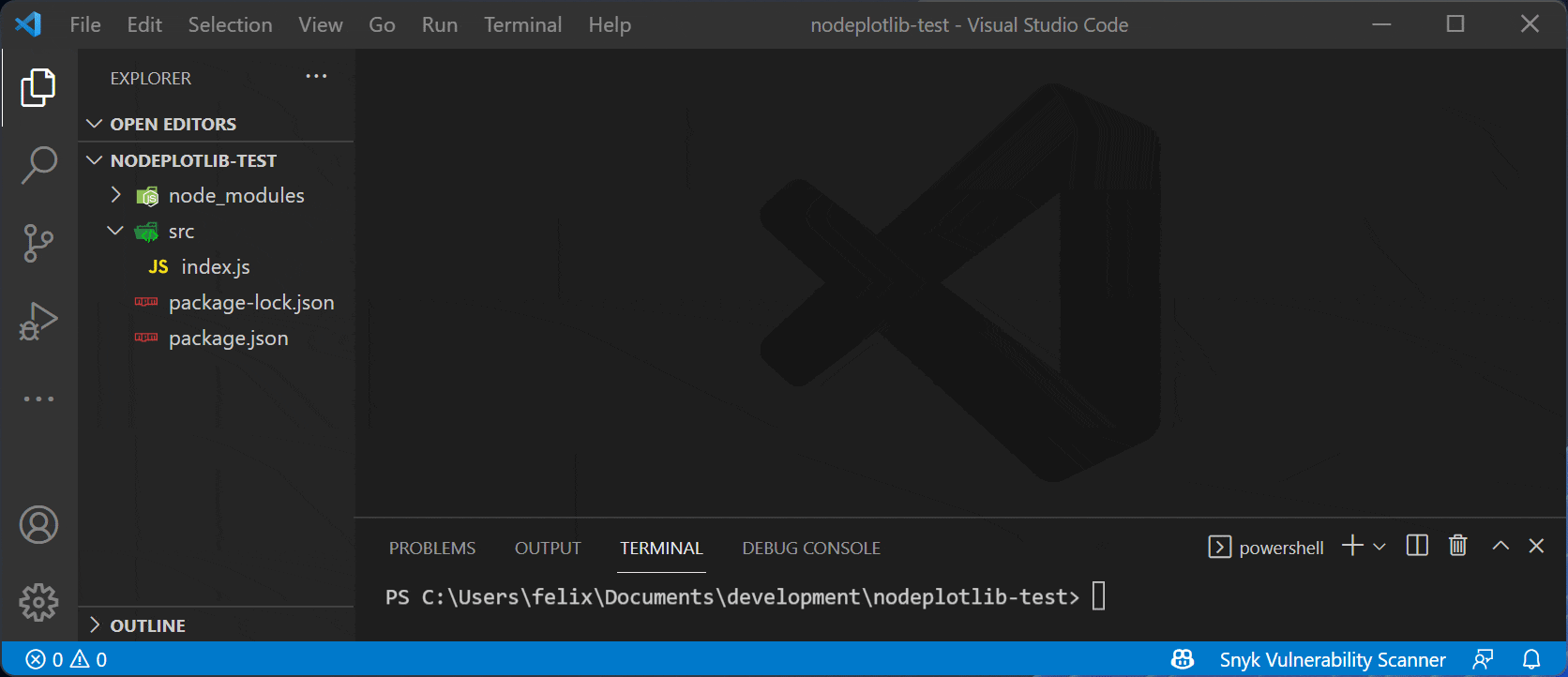@nulven/nodeplotlib
v1.0.3
Published
NodeJS frontend-less plotting lib using plotly.js inspired by matplotlib
Downloads
7
Maintainers
Readme
NodePlotLib
Library to create plots directly in TypeScript or JavaScript in NodeJS on top of plotly.js without any front-end preparations. Inspired by matplotlib.
Installation
npm install nodeplotlib
# or
yarn add nodeplotlibUsage
Creating a simple plot
Use with TypeScript/JavaScript:
import { plot, Plot } from 'nodeplotlib';
const data: Plot[] = [
{
x: [1, 3, 4, 5],
y: [3, 12, 1, 4],
type: 'scatter',
},
];
plot(data);Creating a stream that plots data in realtime
NodePlotLib makes use of the popular RxJS library, which provides functionality for streams, stream creator functions (e.g. from interval or from event), and tons of operators to modify your stream.
In this example we create a stream based on an interval which triggers every 100ms. Then we modify
the output of the interval (which is just a counter) to be an actual Plot using RxJS' map operator.
The output will be a sin function.
import { plot, Plot } from 'nodeplotlib';
import { interval, map } from 'rxjs';
const stream$: Observable<Plot[]> = interval(100).pipe(
map(createSinusPlotFromNumber)
);
function createSinusPlotFromNumber(num: number): Plot[] {
const data: Plot[] = [
{
x: [0, 1, 2, 3, 4, 5, 6, 7, 8, 9],
y: Array(10)
.fill(0)
.map((_, i) => Math.sin(num + i)),
type: 'scatter',
},
];
return data;
}As you can see, providing a function for a dynamic plot seems to be a good idea. The functions content looks almost the same as the "non-stream" version. Simple as that, you can just put the created Observable as an argument in the plot function:
plot(stream$);API overview
There are three exports. The plot function and types for the Plot and for the Layout.
import { plot, Plot, Layout } from 'nodeplotlib';The plot function has the following structure
function plot(data: Plot[] | Observable<Plot[]>, layout?: Layout): void;It does not return a Subscription for the Observables because you just need to close the listening browser window to unsubscribe from all Obserables.
Examples
In this section there are some examples to getting started. See the full plotly cheatsheet.
Line Plots
const trace1: Plot = { x: [1, 2], y: [1, 2], type: 'scatter' };
const trace2: Plot = { x: [3, 4], y: [9, 16], type: 'scatter' };
plot([trace1, trace2]);Bar Charts
const trace: Plot = { x: [1, 2], y: [1, 2], type: 'bar' };
plot([trace]);3D Line Plots
const trace: Plot = {
x: [9, 8, 5, 1],
y: [1, 2, 4, 8],
z: [11, 8, 15, 3],
type: 'scatter3d',
};
plot([trace]);3D Surface Plots
const trace: Plot = {
colorscale: 'Viridis',
z: [
[3, 5, 7, 9],
[21, 13, 8, 5],
],
};
plot([trace]);Radial Plots
In order to style the plot, one is able to pass in the layout parameter, which internally
is typeof Partial<Layout> from plotly's Layout. See the full layout documentation
here.
With this parameter one is able to define styles like title, axis labels, subplots and many more.
const data: Plot[] = [
{
type: 'scatterpolar',
r: [1.5, 10, 39, 31, 15, 1.5],
theta: ['A', 'B', 'C', 'D', 'E', 'A'],
fill: 'toself',
name: 'Group B',
},
];
const layout: Layout = {
polar: {
radialaxis: {
visible: true,
range: [0, 50],
},
},
};
plot(data, layout);Plot types
| Simple charts | Advanced charts | 3D Plots | | --------------- | ---------------- | -------- | | Scatter | 2d density plots | Scatter | | Line | Histograms | Surface | | Bar | Box-plots | Lines | | Pie charts | Contour plots | | | Sankey diagrams | Heatmaps | | | Tables | Radar charts | |
Contributing
Contributions in all forms are welcome.
Developers guide
You can find the developers guide in the repositories root README.md.
Contributors





